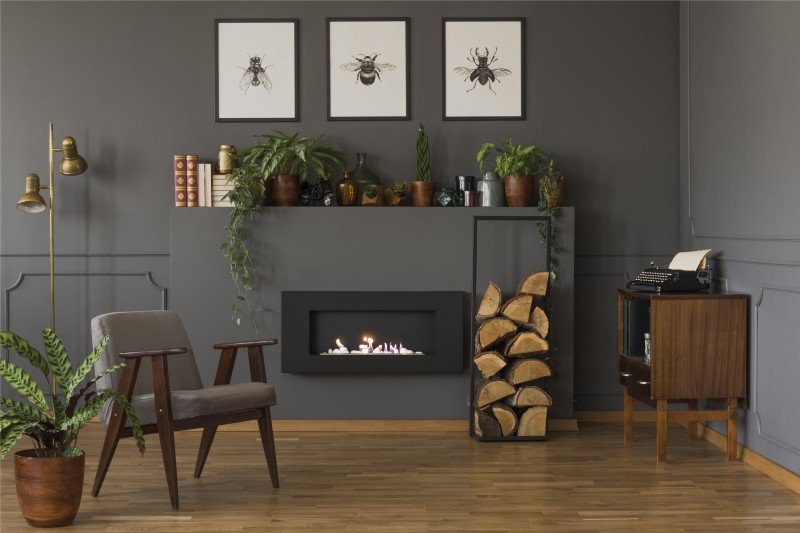Why Is It So Useful? For COVID-19

The Fireplace: A Warm Embrace of Tradition and Comfort
Fireplaces have been an integral part of human habitation for centuries, working as a source of heat, a gathering location, and a symbol of convenience. While the modern variations might vary remarkably from their ancient ancestors, the appeal of a fireplace sustains. This post checks out the numerous aspects of fireplaces, including their history, function, types, and upkeep, while also addressing frequently asked concerns.
The Evolution of Fireplaces
Fireplaces go back to prehistoric times when open flames were utilized for cooking, heating, and security from wildlife. Over the centuries, fireplaces evolved from basic fire pits to the sophisticated renditions we see today. Here is a quick timeline of their evolution:
- Prehistoric Era: Cavemen utilized open flames for warmth and cooking. Wind and smoke often blew into houses.
- Middle Ages: Stone and brick fireplaces became common in homes and castles, integrating chimneys to bring smoke outside.
- Renaissance: Elaborately developed mantels emerged, and fireplaces became centers of social interaction.
- Industrial Revolution: Innovations in heating products led to a range of styles and performances.
- Modern Era: The development of gas, electric, and bioethanol fireplaces provided cleaner alternatives to traditional wood-burning units.
Table 1: The Evolution of Fireplaces
| Period | Qualities |
|---|---|
| Prehistoric Era | Open flames for warmth and cooking |
| Middle Ages | Stone and brick structures with early chimneys |
| Renaissance | Elaborate mantels, social centers |
| Industrial Revolution | Varied designs, advent of new materials |
| Modern Era | Gas, electric, and bioethanol choices |
The Purpose of a Fireplace
Fireplaces serve dual functions: they offer physical warmth and create an emotional environment. Property owners frequently gather around the fireplace to bond, share stories, and enjoy a cozy setting. The radiance of a fire can be soothing, contributing to a sense of relaxation and intimacy. Beyond individual pleasure, fireplaces also use functional benefits, consisting of:
- Home Heating: Effective heat source, specifically in chillier environments.
- Increased Home Value: A well-designed fireplace can enhance the visual value of a home.
- Emergency situation Heating: In case of power interruptions, wood-burning fireplaces can function as an essential heat source.
- Visual Appeal: A focal point that contributes to interior design.
Types of Fireplaces
Today, fireplaces are available in various styles and fuel types, accommodating a varied variety of preferences and settings. Here are some typical types:
Wood-Burning Fireplaces:
- Traditional fire pits
- Classic masonry fireplaces
- Require significant maintenance and chimney maintenance
Gas Fireplaces:
- Available in both direct vent and ventless ranges
- Easier to utilize and preserve than wood-burning fireplaces
- Offer instantaneous heat with a flick of a switch
Electric Fireplaces:
- Offer associated heat sources without genuine flames
- Frequently developed to mimic traditional fireplaces
- Perfect for smaller sized spaces and homes without a chimney
Bioethanol Fireplaces:
- Use bioethanol fuel, supplying a sustainable option
- Need no ventilation and can be positioned anywhere
- Safe and simple to keep
Table 2: Types of Fireplaces
| Type | Fuel Source | Features | Maintenance Requirements |
|---|---|---|---|
| Wood-Burning | Wood | High ambiance, heat source | Regular chimney cleaning |
| Gas | Gas or gas | Immediate heat | Minimal, periodic servicing |
| Electric | Electrical power | Easy setup | Really low maintenance |
| Bioethanol | Bioethanol fuel | Ventless, portable | Low, primarily cleaning up |
Upkeep and Safety Considerations
Owning a fireplace includes particular obligations, specifically concerning its safe operation and long-term upkeep. Here are essential upkeep tips and security standards:
Maintenance Tips:
- Annual Inspection: Always have your chimney and fireplace checked at least as soon as a year by a certified service technician.
- Regular Cleaning: Clean out ashes and debris after each usage, and guarantee the flue is open before starting a fire.
- Check for Cracks: Inspect masonry for fractures or damage to prevent structural issues.
- Use Proper Fuel: Only usage dry, experienced wood for wood-burning fireplaces; do not burn cured wood.
Safety Guidelines:
- Install Smoke Detectors: Ensure smoke alarm are functional, testing them regular monthly and changing batteries as needed.
- Keep a Fire Extinguisher: Have one neighboring, even if a fireplace is used rarely.
- Monitor Flames: Never leave a fire unattended, and guarantee kids and family pets are kept track of around the fireplace.
Often Asked Questions (FAQs)
1. How can I minimize smoke from a wood-burning fireplace?
To minimize smoke, use dry, skilled wood, and make sure that your chimney is clean and unobstructed.
2. Is it safe to utilize gas fireplaces during a gas leak?
Never ever use a gas fireplace throughout a gas leak. Instantly leave the location and contact gas services for help.
3. Can mouse click the following web site install an electric fireplace myself?
Electric fireplaces are usually easy to install, however it is advised to talk to specialists to make sure safety and compliance with local building regulations.
4. What is the best type of fireplace for small areas?
Electric fireplaces or bioethanol designs are often best for small areas, as they do not require comprehensive ventilation or structural modifications.
Fireplaces have actually transcended their initial purpose of providing heat to end up being valued aspects of home design and domesticity. They stimulate memories of heat, events, and togetherness while supplying practical benefits that enhance modern living. By understanding the numerous types of fireplaces, their upkeep, and safety practices, homeowners can take pleasure in the timeless appeal of this precious function for generations to come.

